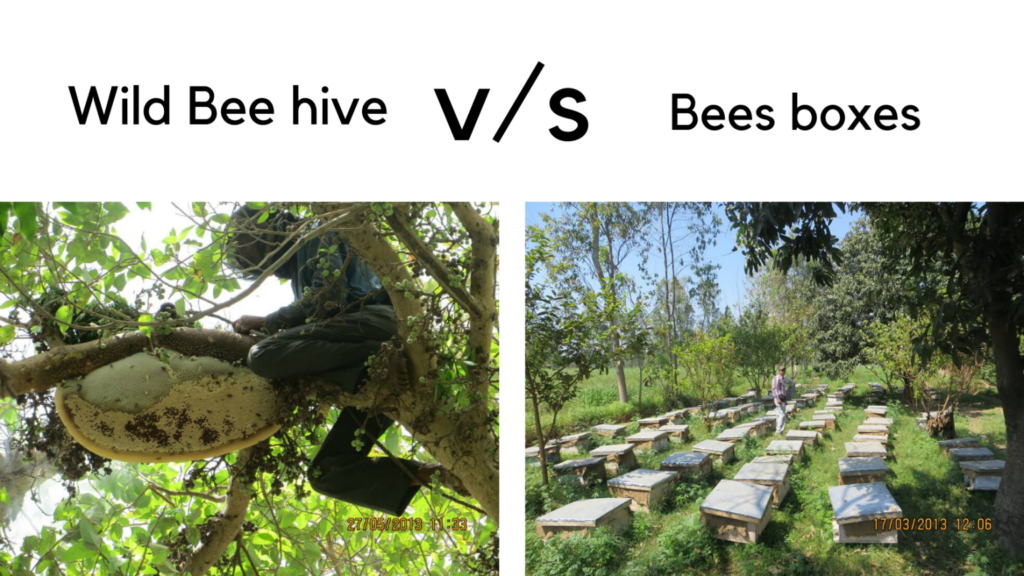When comparing types of honey, one key debate often surfaces—apiary honey vs wild honey. Both are natural sweeteners with health benefits, but they differ significantly in how they are produced, their purity, and their sustainability. Understanding the difference between apiary and wild honey helps consumers make better, more informed choices when buying natural honey.
Although the production process is similar, apiary and wild honey vary greatly. The difference lies in the bee species, their habitats, how the honey is extracted, and the production methods used.
1. The Bees Behind Apiary Honey and Wild Honey
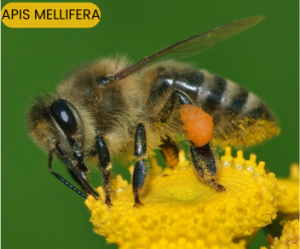 and
and 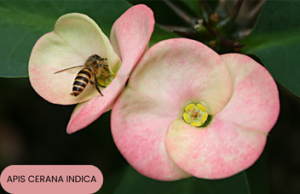
Apiary Honey Bees
In India, beekeepers primarily use Apis mellifera (European honeybee) because it yields more honey and adapts well to man-made hives. These bees measure about 12 mm and are easy to manage and relocate. Apis cerana indica (Indian honeybee) is also used but less often due to its lower yield and difficulty in migration.
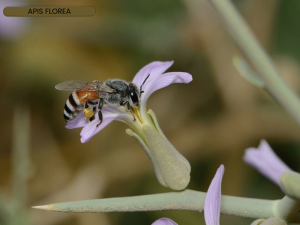
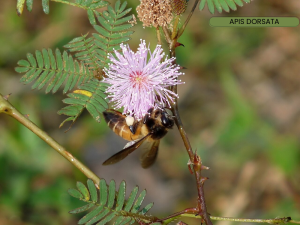
Wild Honey Bees
Wild honey comes from Apis dorsata (Giant honeybee, ~20 mm) and Apis florea (Dwarf honeybee, ~8 mm). These bees build exposed hives in forests, on trees, or cliffs. They cannot be domesticated, and honey collection often damages their hives.
2. Habitat and Hive Structure
Apiary Honey
In apiaries, bees create hives inside dark, enclosed bee boxes. Beekeepers install multiple removable frames, which makes the hives easy to manage and move. As a result, this controlled environment supports clean, sustainable honey extraction.
Wild Bee Honey
Wild bees build single, large combs in open spaces. These hives face exposure to weather and predators. Since wild bees cannot be relocated, harvesting their honey is riskier and more destructive.
3. Bee Migration Patterns
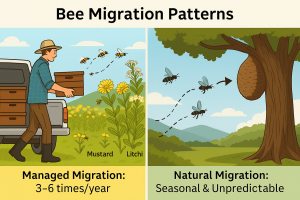
Apiary Bees
Beekeepers move their bee boxes throughout the year to follow blooming patterns. This ensures a steady nectar supply, improves colony health, and increases honey yield. Typically, bees are migrated 3–6 times per year.
Wild Bees
Wild bees migrate naturally once the flowering season ends. They search for new blooming areas and build fresh hives. However, this process is slower and depends entirely on nature.
4. Extraction Methods
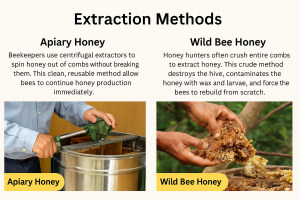
Apiary Honey
Beekeepers use centrifugal extractors to spin honey out of combs without breaking them. This clean, reusable method allows bees to continue honey production immediately.
Wild Bee Honey
Honey hunters often crush entire combs to extract honey. This crude method destroys the hive, contaminates the honey with wax and larvae, and forces the bees to rebuild from scratch.
5. Yield Comparison
Apiary Honey
Apiary combs stay intact after harvesting, allowing repeated extractions each season. Consequently, beekeepers often produce 10 times more honey than from wild hives in the same area.
Wild Bee Honey
Wild honey yields are lower. Since harvesting destroys the hive, bees must build it again before producing more honey. This delay slows down production.
6. Quality and Purity Differences
Apiary Honey
Apiary honey remains natural and pure. Clean extraction keeps it clearer, with fewer particles. Beekeepers rarely feed bees sugar, and even then, only during emergencies. Moreover, labs can detect any sugar traces, confirming its authenticity. Read more about purity tests.
Wild Bee Honey
Wild honey often appears cloudier and ferments faster. Crushing the hive introduces debris like wax and pollen. Although it has a raw, earthy flavor, its quality depends on how it’s harvested. Learn why honey crystallizes.
7. Sustainability and Production Trends
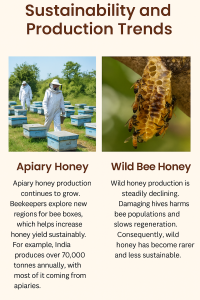
Apiary Honey
Apiary honey production continues to grow. Beekeepers explore new regions for bee boxes, which helps increase honey yield sustainably. For example, India produces over 70,000 tonnes annually, with most of it coming from apiaries.
Wild Bee Honey
Wild honey production is steadily declining. Damaging hives harms bee populations and slows regeneration. Consequently, wild honey has become rarer and less sustainable.
8. Myth vs Fact About Apiary Honey
Myth: Beekeepers feed sugar to bees, and they make honey from it.
Fact: Beekeepers migrate bee boxes to 5–6 floral regions yearly. Bees feed on natural nectar. Sugar, if given, is used only for survival—not stored as honey. Furthermore, lab tests can easily detect any sugar contamination.
Final Thoughts on Apiary Honey vs Wild Honey
Both types of honey offer unique benefits. However, apiary honey is often the more practical, sustainable, and hygienic choice. It is consistently available, lab-tested, and eco-friendly. On the other hand, wild honey, while raw and traditional, faces limitations in quality control and sustainability.
If you’re seeking a dependable, natural sweetener for your family, apiary honey stands out as the better option.

